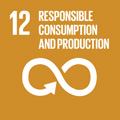- Docente: Francesco Tinti
- Credits: 6
- SSD: ING-IND/28
- Language: Italian
- Teaching Mode: In-person learning (entirely or partially)
- Campus: Bologna
- Corso: Second cycle degree programme (LM) in Environmental Engineering (cod. 8894)
-
from Feb 18, 2025 to May 29, 2025
Learning outcomes
The course provides the main principles of mine planning, operation and environmental management, including basics of mineral resources, introduction to exploration activities and analysis of the italian legislation and the european strategy in the sector of raw materials.
Some hints related to mineral characterization, excavation safety, blasting, processing, market assessment and environmental rehabilitation are also given, for the future deepening in the dedicated specialization path.
Course contents
The course aims to give an introduction to the topic of exploration and extraction of solid mineral raw materials. It will serve as a cultural basis to the students for the further insights (Dedicated specialization path: "Georesources").The course contents are applied at national and international level, but also, appropriately declined, to the local context.
Recommended knowledge:
Geology, Geotechnics, Topography, Cartography.
Contents:
- RECALLS ON MINERAL DEPOSITS - Definitions and main factors. Distribution, abundance and scarcity of elements. Classification of deposits. Origin processes.
- MINERAL EXPLORATION - Exploration criteria and methods. Core drilling and measurement campaigns.
- ORE DEPOSIT MODELING - Resources and reserves. Grade tonnage curve. Free and constrained selection. Economic aspects.
- EXCAVATION AND EXPLOITATION - Excavation techniques. Open pit mining. Underground mining. Selection criteria. Specificities of variuos minerals and ornamental stones. Pit design modeling and optimization. Management of materials and heaps.
- ENVIRONMENTAL IMPACT MANAGEMENT - On-site monitoring and reporting. Closure and post-closure phases. Land rehabilitation and restoration. Mineral residues and proper management.
- ITALIAN AND EUROPEAN LEGISLATION. Basic legislation. Administrative aspects for the different types of mineral raw materials. Authorizations and concessions. Management and accountability. Recent updates.
- INTRODUCTION TO THE SPECIALISTIC TOPICS - Ore body characterization. Drill and blast techniques. Underground constructions. Mineral processing. Health and safety.
- MINE DESIGN AND PLANNING, WITH ELEMENTS OF TECHNICAL-ECONOMIC EVALUATION.
Readings/Bibliography
- Gerbella G. Arte Mineraria. Terza Edizione. Hoepli, 1959.
- Park C.F., Mac Diarmid R.A. Giacimenti Minerari. Liguori Editore 1982
- Orche E. Manual de Geologia e Investigacion de Yacimentos Minerales. ETSI Minas, Madrd. 2001
- Ratan Raj T. Surface and underground excavations - Methods, Techniques and Equipment (Balkema Publishers, 2005)
- Hustrulid, W.A., Kucka M. Open Pit Mine Planning and Design - II Edition (CRC Press, 2006)
- Darling, P. SME MINING ENGINEERING HANDBOOK - III Edition (Society of Mining, Metallurgy and Exploration, 2011)
- Chagnes, A., Chernoburova O. Mining and Processing Residues: Future' s Source of Critical Raw Materials (Elsevier Book, 2023)
Teaching methods
The lessons will all be traditional and will be divided into a first part introducing the theoretical framework, followed by a practical exercise in the classroom.
The course will exploit seminars on specific topics, held by specialists and professionals in the sector.
At least one visit to an active open pit and/or underground mining site is planned.
Assessment methods
The exam will consist of a written test and an oral assessment.
1. The written test will be composed by exercises to solve and questions to answer, aimed at verifying the general knowledge of the subject (duration: 1 hour).
2. For the oral assessment, students will be asked to present the developed essay, chosen among the available alternatives (indicative duration: half an hour).
The final grade will depend half on the result of the written test and half on the evaluation of the essay presentation.
Teaching tools
The exercises will make use of: Microsoft Office package, AutoCAD, GIS and other softwares. Moreover, videos of specific mining works will be presented and discussed.
Office hours
See the website of Francesco Tinti
SDGs

This teaching activity contributes to the achievement of the Sustainable Development Goals of the UN 2030 Agenda.
